We've now seen the second 2025 Formula 1 car courtesy of Williams and I'm a little surprised that we haven't seen more differences between its 2024 and 2025 cars.
I suppose you could say that last year the team was dramatically affected by a string of accidents and incidents and that it was simply in survival mode, especially during the second half of the season, so it wasn't really able to show its true end-of-season potential.
Team principal James Vowles said that Williams was focusing on driver-usable downforce, which is something that 2009 F1 champion Jenson Button also commented on during its launch. I fully agree with that and there are a couple of interesting changes that might just improve that characteristic.
But as I often say, it's the detail that counts and we really don't see enough of that to comment with any degree of confidence on whether Williams has achieved that this year.
With the arrival of Carlos Sainz to partner Alex Albon it has a very strong driver pairing, so there are no excuses now - it's all down to the car.
Front wing and front suspension
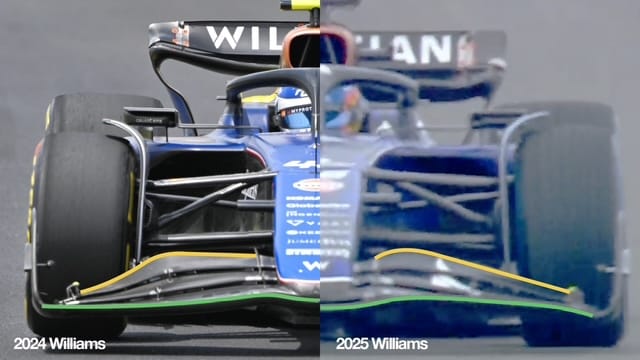
As I have said many times, it all starts at the front of the car. There seems to be a slightly different loading of the front wing, which has the trailing edge highlighted in yellow, and the transition from the section under the nose looks less pronounced.
It also looks like the leading edge further outboard, which is highlighted in green, has been raised. This raises the stagnation point - the dividing point between the airflow that goes under the wing and the airflow that goes over the top surface - and there will be slightly less front downforce but it will be less sensitive with more consistency with ride height changes. There's also increased mass flow to the underfloor leading edge.
Other than that there doesn't appear to be much difference in the new front wing, but it's all down to the flow structure coming off the front wing trailing edge and how that affects the body profiles further downstream.
The front suspension is pushrod-operated and is externally very similar. Under the skin it may be a completely different story but we are not privy to that detail.
Sidepod
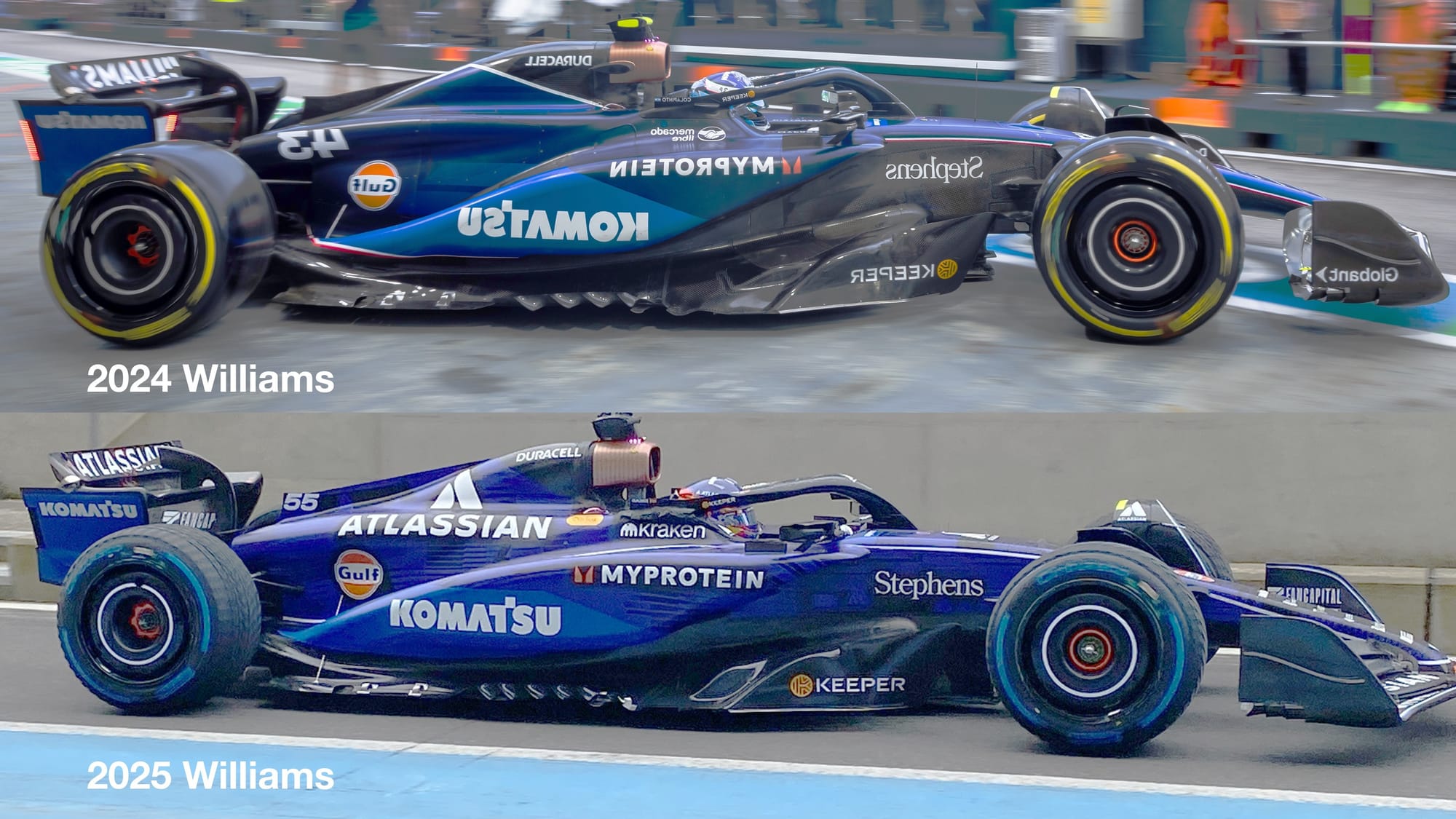
From a side view we can see changes to the sidepod profile. Williams now has more of a bathtub effect than just a short sidepod, which is highlighted with a red line on the image below.
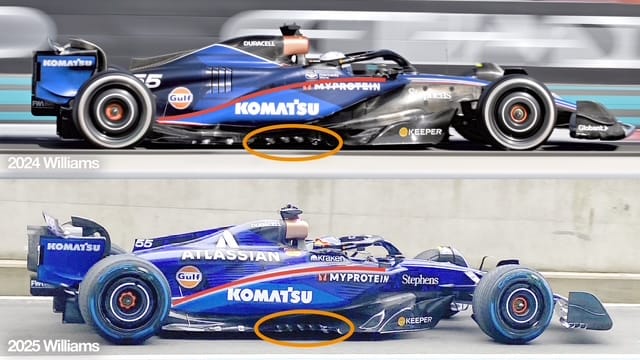
This should contain the flow over the top body surface better and direct more flow to the centre of the car. That could help with consistency of the flow, which is helping extract the underfloor flow, especially near the centre of the car at low ride heights.
The area at the end of the underbody turning vanes, highlighted with the orange ellipse, looks a little busier and even though the angle is slightly different, these vanes look like they start that little bit further forward.
Getting this front corner of the floor working harder means that the diffuser will have more effect on the airflow going under the main section of the underfloor, which means that it will produce higher levels of downforce, but more importantly improve the consistency of the downforce it produces.
Mercedes rear suspension
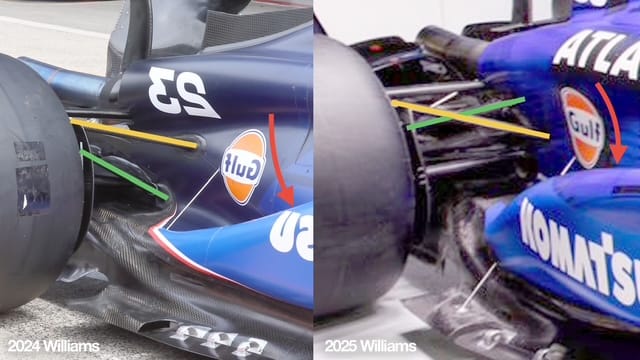
As for the rear suspension, that is where one of the major changes has taken place. Williams uses the Mercedes transmission unit; last year it was the year-old 2023 Mercedes package, so a year behind the competition, but this year it's the latest 2025 Mercedes package (understood to be a 2024 carryover) complete with rear suspension.
The main change is going from a pullrod to a pushrod rear suspension system, which is highlighted with the green line.
The pushrod, as with last year's Mercedes, is at a very shallow angle which increases the loads. However, this modification does mean the transmission housing just behind the engine-gearbox interface at the centre of the car can be narrower. That will allow that flow from the body bathtub area, which is highlighted with the red arrow, to have more effect on the airflow in this area.
I have also curved the arrow to show how Williams has also squeezed the inner body profile, to again allow more flow through this area.
Last year Williams was running with very little anti-lift on the upper wishbone forward leg inboard end position, which is highlighted with the yellow line, but for 2025 this has increased fairly dramatically.
This will be a big advantage under braking as it will keep the height of the rear of the car more consistent, improving the drivers' confidence just at corner entry.
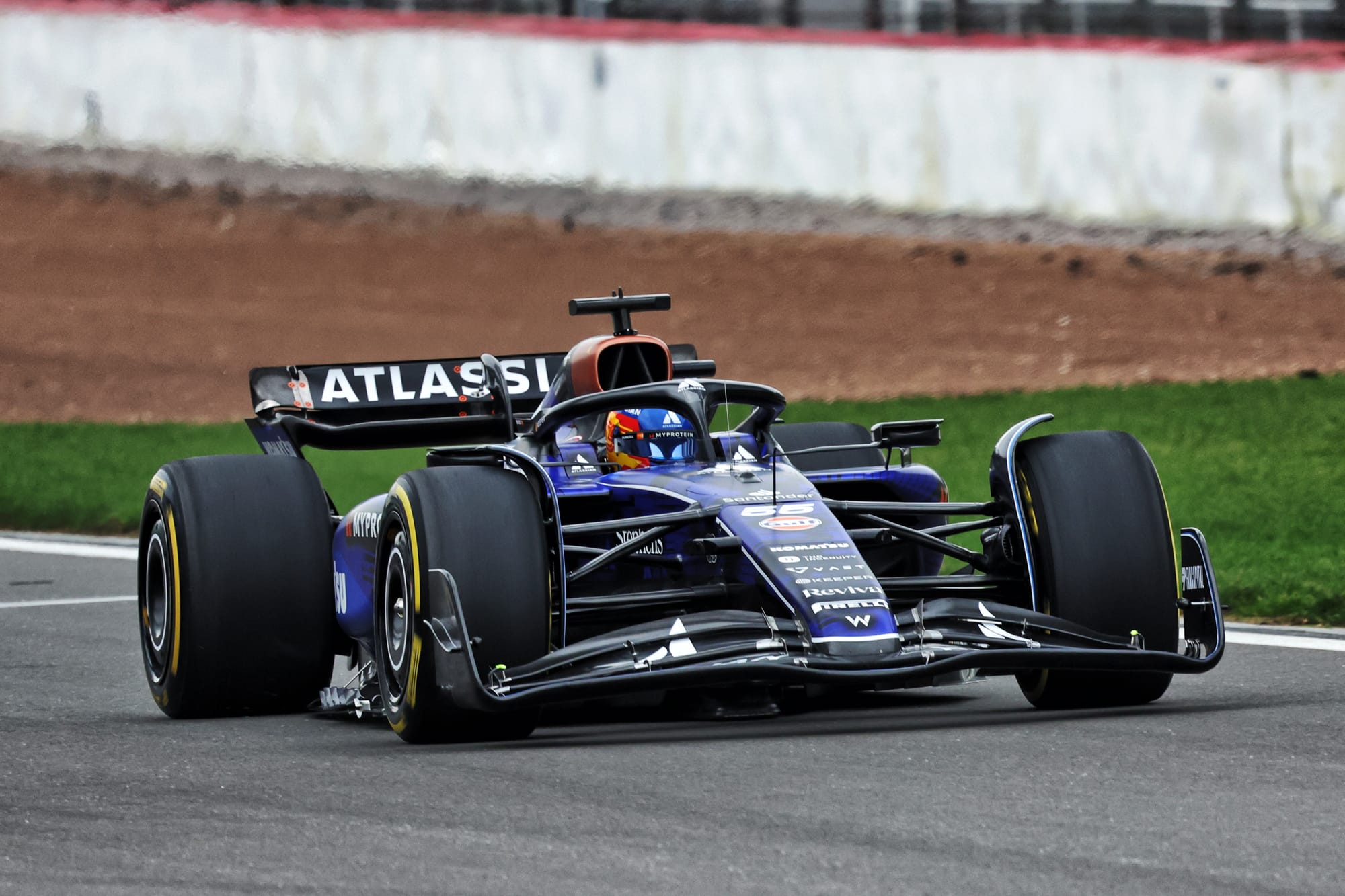
For Williams, last year it was all about surviving a crash fest, and when that happens the car just gets heavier and heavier. Williams says that this year's car is on the weight limit so that should be another positive.
This year it's all about stabilising and if it can be a reasonably consistent Q3 participant and points scorer then it will have achieved a step in the right direction.
Rome wasn't built in a day but Williams looks like it has a good foundation to start to build from.



